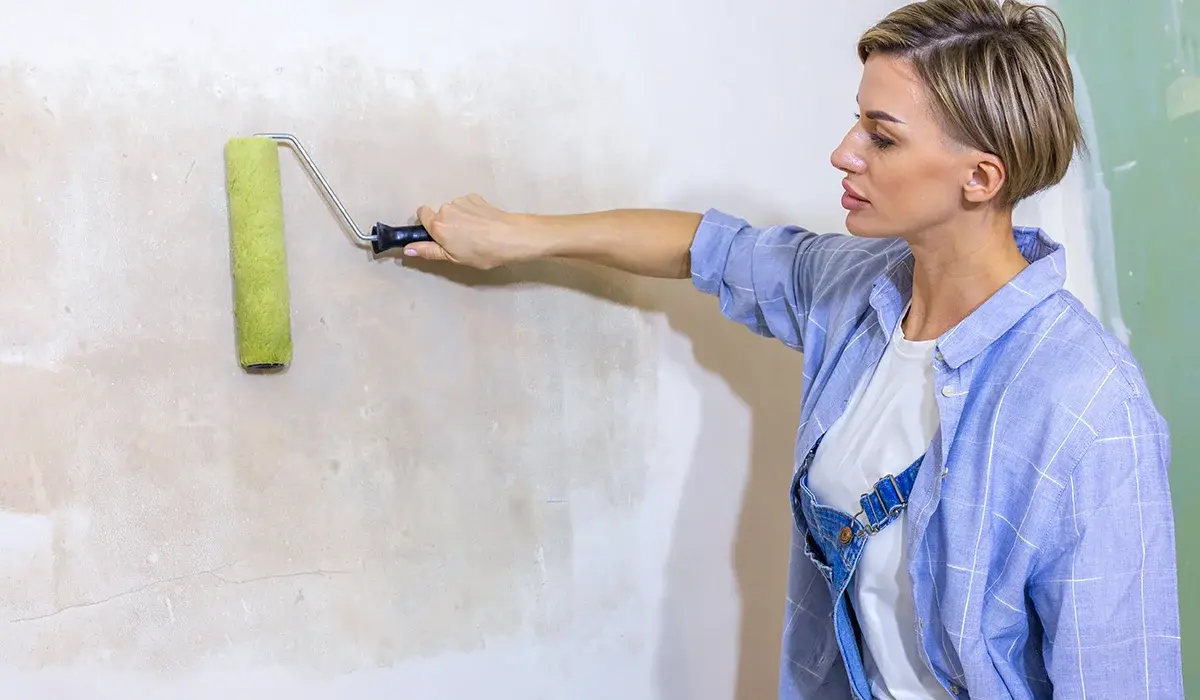Painting
Is Painting a House Possible in Humid Weather?

Painting in Humid Weather: A Complete Homeowner’s Guide
Painting your home in the right conditions matters. But what happens when moisture fills the air or it’s raining?
Understanding how moisture and paint interact can help you avoid costly mistakes. This guide dives into the facts about painting in humid weather and how to do it right.
How Humidity Affects Paint Performance
Humidity impacts the way paint dries. Even though latex paint is water-based, excess moisture disrupts curing.
Too much moisture causes bubbling, streaking, and poor adhesion. As a result, your painted surfaces won’t look smooth or last long.
Even worse, the paint may never fully harden. That’s why painting in humid weather requires planning and precision.
Acceptable Humidity Levels for Painting Projects
Let’s break down the safe ranges of humidity before you start painting:
Ideal Range: 40% to 50%
This is the sweet spot. Paint dries evenly and thoroughly when humidity sits between 40% and 50%.
Interestingly, some moisture in the air helps paint flatten out and prevents brush strokes from setting too fast.
Tolerable Range: 50% to 70%
Painting within this range still works. However, drying slows down, and patience becomes crucial.
Be sure to monitor drying times carefully. Add fans or air movement to help speed things up.
Risky Range: 70% to 80%
You can still proceed, but now the risk grows. Paint may stay tacky for longer and can attract dust or debris.
Brush marks may not flatten. So consider using paints with special additives for high-moisture conditions.
Danger Zone: Over 85% or Under 40%
Avoid painting when it’s extremely humid or extremely dry. Over 85%, paint becomes gummy and won’t cure correctly.
In low humidity below 40%, paint dries too fast. It might crack, peel, or leave visible brush marks.
Painting in Humid Weather: Key Considerations
Many people delay home painting jobs waiting for perfect weather. However, no region is completely humidity-free.
Even dry places like Phoenix still have some level of humidity, especially during seasonal changes.
Focus on Surface Conditions
What matters most is not just the air, but the moisture on your painting surface. Wet wood won’t hold paint properly.
Wait for a few sunny or windy days to dry out siding. Water can soak deep into uncoated wood and stay there.
Always test surfaces before painting. Touch them. If they feel cool or damp, hold off and reassess the next day.
How Humidity Slows Drying
High humidity traps water inside the paint. Solvents may evaporate, but water lingers, preventing the paint from curing.
Eventually, you’ll face a peeling, soft finish that feels sticky even days later. The only solution then is to scrape everything off.
Even oil-based paints suffer in high humidity. So don’t rely on paint types to bypass moisture problems.
Best Time of Day and Season to Paint
Timing matters. Start painting after morning dew has dried but before late-day humidity rises again.
Usually, late morning or early afternoon offers the best balance. Avoid painting during early hours when moisture still lingers.
Spring and Summer Offer Best Conditions
Warmer seasons help paint dry properly. Spring and summer provide dry, consistent air in most regions.
If you’re painting uncoated wood, give it more time. It absorbs moisture and holds it longer than sealed surfaces.
Interior vs. Exterior Painting in Humid Weather
Indoor painting usually stays safe from humidity issues. Air conditioners, heaters, and dehumidifiers help regulate indoor conditions.
But high humidity inside bathrooms can still cause paint failure. Use fans or leave windows open during and after painting.
Tips for Successful Painting in Humid Weather
- Always check weather forecasts before starting a project.
- Use quick-dry or humidity-resistant paint when needed.
- Paint in small sections and allow time for drying.
- Add airflow with fans to help speed up evaporation.
- Paint during dry windows of the day, like late morning.
Final Thoughts on Painting in Humid Weather
Painting in humid weather isn’t impossible. But you must know the risks and take the right precautions every step of the way.
Stay within the ideal 40% to 70% humidity range whenever possible. If you must paint outside that, adjust your strategy.
With good planning, you can still achieve smooth, long-lasting results—even when the air feels thick with moisture.
Explore More
Want more expert tips on painting and home improvement? Explore more news on this website for helpful guides and updates.
